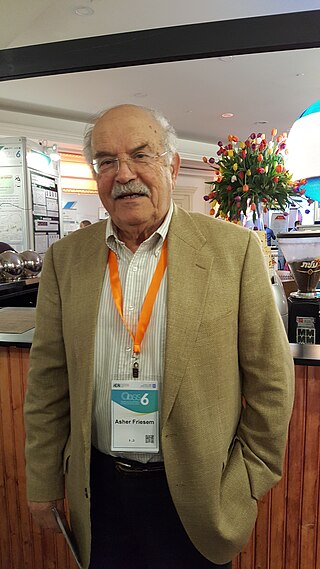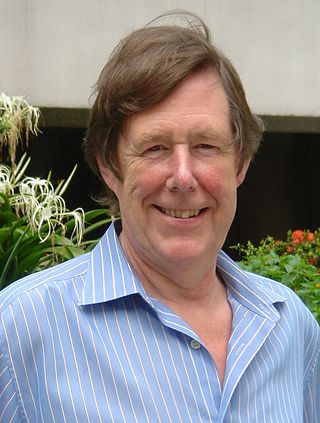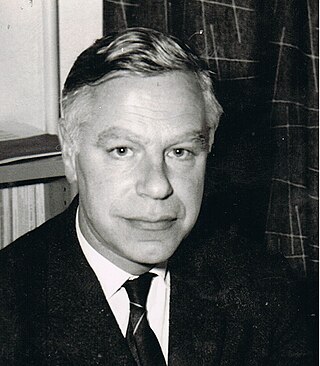Related Research Articles

Frits Zernike was a Dutch physicist and winner of the Nobel Prize in Physics in 1953 for his invention of the phase-contrast microscope.

The point spread function (PSF) describes the response of a focused optical imaging system to a point source or point object. A more general term for the PSF is the system's impulse response; the PSF is the impulse response or impulse response function (IRF) of a focused optical imaging system. The PSF in many contexts can be thought of as the extended blob in an image that represents a single point object, that is considered as a spatial impulse. In functional terms, it is the spatial domain version of the optical transfer function (OTF) of an imaging system. It is a useful concept in Fourier optics, astronomical imaging, medical imaging, electron microscopy and other imaging techniques such as 3D microscopy and fluorescence microscopy.

The Maui Space Surveillance Complex (MSSC) is a U.S. Space Force operating location for the 15th Space Surveillance Squadron and the Air Force Research Laboratory (AFRL) at Haleakala Observatory on Maui, Hawaii, with a twofold mission. First, it conducts the research and development mission on the Maui Space Surveillance System (MSSS) at the Maui Space Surveillance Complex (MSSC). Second, it oversees operation of the Maui High Performance Computing Center (MHPCC). AFRL's research and development mission on Maui was formally called Air Force Maui Optical Station (AMOS) and the Air Force Maui Optical and Supercomputing observatory; the use of the term AMOS has been widespread throughout the technical community for over thirty years and is still used today at many technical conferences. The main-belt asteroid 8721 AMOS is named after the project.
The International Commission for Optics (ICO) was created in 1947 with the objective to contribute, on an international basis, to the progress and dissemination of the science of optics and photonics and their applications. It emphasises the unity of the crossdisciplinary field of optics.

Kornelis Antonie "Kees" Schouhamer Immink is a Dutch engineer, inventor, and entrepreneur, who pioneered and advanced the era of digital audio, video, and data recording, including popular digital media such as compact disc (CD), DVD and Blu-ray disc. He has been a prolific and influential engineer, who holds more than 1100 U.S. and international patents. A large portion of the commonly used audio and video playback and recording devices use technologies based on his work. His contributions to coding systems assisted the digital video and audio revolution, by enabling reliable data storage at information densities previously unattainable.
SPIE is an international not-for-profit professional society for optics and photonics technology, founded in 1955. It organizes technical conferences, trade exhibitions, and continuing education programs for researchers and developers in the light-based fields of physics, including: optics, photonics, and imaging engineering. The society publishes peer-reviewed scientific journals, conference proceedings, monographs, tutorial texts, field guides, and reference volumes in print and online. SPIE is especially well-known for Photonics West, one of the laser and photonics industry's largest combined conferences and tradeshows which is held annually in San Francisco. SPIE also participates as partners in leading educational initiatives, and in 2020, for example, provided more than $5.8 million in support of optics education and outreach programs around the world.

Leonard Salomon Ornstein was a Dutch physicist.

Asher A. Friesem is a professor at the Weizmann Institute of Science in Israel.
Joseph Wilfred Goodman is an engineer and physicist.
Albert A. Bouwers (1893–1972) was a Dutch optical engineer. He is known for developing and working with X-rays and various optical technologies as a high-level researcher at Philips research labs. He is lesser known for patenting in 1941 a catadioptric meniscus telescope design similar to but slightly predating the Maksutov telescope.
Gisele Bennett was a professor at the Georgia Institute of Technology and the Director of the GTRI Electro-Optical Systems Laboratory at the Georgia Tech Research Institute (GTRI). She also founded the Logistics and Maintenance Applied Research Center (LandMARC) at GTRI.

The Philips Natuurkundig Laboratorium or NatLab was the Dutch section of the Philips research department, which did research for the product divisions of that company. Originally located in the Strijp district of Eindhoven, the facility moved to Waalre in the early 1960s. A 1972 municipal rezoning brought the facility back into Eindhoven, which was followed some years later by Eindhoven renaming the street the facility is on into the Prof. Holstlaan, after the first director.

Colin James Richard Sheppard, usually cited as C. J. R. Sheppard, is senior scientist at the Italian Institute of Technology, Genoa, Italy. Previously, he was professor in the Department of Bioengineering and Faculty of Engineering for National University of Singapore (2003–2012). He has held joint appointments with the NUS Departments of Biological Sciences and Diagnostic Radiology. He was SMART Faculty Fellow, and Adjunct Research Staff at SERI.
NEC Laboratories America, Inc. , formerly known as NEC Research Institute, is the US-based center for NEC Corporation’s global network of corporate research laboratories. It was established in 1988 with the primary location in Princeton, New Jersey and subsequently, a second location in the San Francisco Bay Area, specifically San Jose, California. The lab is a subsidiary of the NEC Corporation of America, headquartered in Irving, Texas. Its mission is to generate significant new knowledge and create innovative solutions for society in collaboration with industry, academia, and governments. Most research results from NEC Labs America are published in the open scientific literature.
Jan Frederik Schouten was a Dutch physicist, and Professor at the Eindhoven University of Technology, known for his contributions to biophysics.

Bernard Roelof Andries Nijboer was a Dutch physicist and professor at the Institute of Theoretical Physics of the Utrecht University from 1956 until 1984. He was mainly active in the fields of optics and solid-state physics.
Masanobu Yamamoto is a Japanese optical engineer, inventor, business executive, and olympian.
Ronald M. Aarts,, is a Dutch electrical engineer and physicist, inventor and professor in the field of electroacoustics and in biomedical signal processing technology.

Joseph Rosen is the Benjamin H. Swig Professor in Optoelectronics at the School of Electrical & Computer Engineering of Ben-Gurion University of the Negev, Israel.

Abraham Cornelis Sebastiaan "Bram" van Heel was a Dutch professor of physics at the then TH Delft. He is regarded as the 'father of technical optics in the Netherlands'.
References
- ↑ D. J. van de Kaa; Kaa; Y. de Roo (19 December 2008). De Leden Van de Koninklijke Nederlandse Akademie Van Wetenschappen: Een Demografisch Perspectief: 1808 Tot 2008. Amsterdam University Press. p. 260. ISBN 978-90-6984-552-4.
- 1 2 3 4 5 6 7 "Prof. dr ir J.J.M. Braat". Delft University of Technology. Archived from the original on 7 January 2018.
- 1 2 3 "Joseph Braat". Franklin Institute. 2001. Archived from the original on 14 February 2017.
- 1 2 Karen Mauve (19 June 1998). "Joseph Braat: verlaat het lab" (PDF) (in Dutch). Hagenbeuk.nl. Archived from the original (PDF) on 7 January 2018.
- ↑ "Extended Nijboer-Zernike (ENZ) Analysis & Aberration Retrieval". nijboerzernike.nl. 7 November 2019. Archived from the original on 4 August 2020.
- ↑ "Joseph Braat". Royal Netherlands Academy of Arts and Sciences. Archived from the original on 6 January 2018.
- ↑ "EOS fellows". European Optical Society. Archived from the original on 13 June 2020.
- ↑ "Joseph Braat receives the Holst award medal from TU/e Rector Frank Baaijens". Delft University of Technology. 9 December 2019. Archived from the original on 4 July 2022.
- 1 2 "Book launch: "Imaging Optics" by Joseph Braat and Peter Török". Delft University of Technology. 8 May 2019. Archived from the original on 10 October 2020.